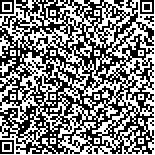| 摘要: |
| [目的]在我国城市化过程中,城市空间增长边界的划定作为城市空间管理的重要手段之一,可以有效缓解城市规模无序扩张、土地利用效率不高等问题。[方法]研究主要是根据乌鲁木齐市中心城区土地利用现状数据和社会经济发展数据对城区空间增长边界进行划定和分析,运用BP神经网络方法和灰色模型对2020年乌鲁木齐市的建成区规模进行预测,依托GIS空间数据处理平台对乌鲁木齐市中心城区行政范围进行建设用地适宜性评价,根据建成区规模的预测结果和建设用地适宜性评价结果综合分析获取中心城区空间增长的弹性边界及刚性边界,并分析其划定的合理性及建设用地增长的空间特征。[结果]到2020年乌鲁木齐市中心城区规模预计将达到5.2276万hm2。其中城区南部新增建设用地最多,但是城南区域对城市未来发展贡献的潜力较小;北部新增建设用地分布较为分散,主要是因为城区北部存在大面积的农用地。[结论]未来城市空间发展的重要方向是北部,这就面临着建设用地开发与耕地保护之间的矛盾,耕地保护不仅是为了粮食安全,更重要的是其承载的生态功能,完整的生态系统是城市可持续发展的重要基础,如何协调建设用地开发与耕地保护之间的关系显得尤为重要。 |
| 关键词: 乌鲁木齐市 城区空间增长边界 BP神经网络 灰色模型 GIS空间分析 |
| DOI: |
| 分类号:TU984.113 |
| 基金项目:国家社会科学基金项目“西部‘矿农复合区’非自愿移民搬迁安置及管控机制研究”(14XGL005);国家社会科学基金项目“塔里木盆地矿—农复合区矿产资源利用补偿调控机制研究”(08BJY061) |
|
| RESEARCH ON THE URBAN DOWNTOWN GROWTH BOUNDARY IN URUMQI CITY |
|
Mu Feixiang1,2, Pu Chunling1,2, Liu Xiangxin1,2
|
|
1.School of Management, Xinjiang Agricultural University, Urumqi 830052, China;2.Center for Economic and Social Development, Xinjiang Agricultural University, Urumqi 830052, China
|
| Abstract: |
| In the process of urbanization in China, the delimitation of urban spatial growth boundary, as one of the important means of urban space management, can effectively alleviate the problems of disorder expansion of urban scale and low land use efficiency. This paper designed and analyzed the urban spatial growth boundary based on land utilization data and social economic development, predicted the scale of Urumqi in 2020 using the method of BP neural network and Grey model, evaluated the construction land suitability based on the GIS spatial data processing platform, and then analyzed the rationality of its designated and spatial characteristics of the construction land growth. The results showed that the urban area would be 522.7611 square kilometers by 2020. There were more new construction sites in the south of the city with less potential for urban future development. The distribution of new construction land in the north was more dispersed due to the large area of agricultural land. The north was the important direction of future urban space, where had faced with the contradiction between the construction land development and cultivated land protection. The cultivated land protection was not only for food safety, but also ecological function, which was the important foundation of urban sustainable development. How to coordinate the relationship between the construction land development and cultivated land protection was particularly important. |
| Key words: Urumqi urban growth boundary BP neural network Grey model GIS spatial analysis |

